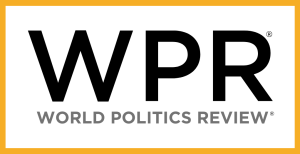 Earlier this month, Rafael Grossi, the director-general of the International Atomic Energy Agency, or IAEA, traveled to Tehran amid growing concern over the proliferation risk posed by Iran’s expanding nuclear activities. In particular, the IAEA had recently detected uranium enriched to 84 percent in an Iranian nuclear site, at a time of heightened tensions due to the breakdown in multilateral talks on reviving the Iran nuclear deal.
Earlier this month, Rafael Grossi, the director-general of the International Atomic Energy Agency, or IAEA, traveled to Tehran amid growing concern over the proliferation risk posed by Iran’s expanding nuclear activities. In particular, the IAEA had recently detected uranium enriched to 84 percent in an Iranian nuclear site, at a time of heightened tensions due to the breakdown in multilateral talks on reviving the Iran nuclear deal.
During Grossi’s trip, Iran agreed to allow the IAEA to reestablish certain transparency measures at select nuclear sites. Iran had suspended IAEA access and monitoring measures at these locations in violation of the 2015 nuclear deal, known formally as the Joint Comprehensive Plan of Action, or JCPOA. While the two sides must still work out the details that will determine the extent of the agreement’s benefits, any increase in transparency is a positive step that bodes well for international efforts to contain Iran’s nuclear program.
The agreement with the IAEA is the first step toward a de-escalation of nuclear tensions between Iran and the West that have grown since 2019. In response to the United States’ withdrawal from the agreement and reimposition of unilateral sanctions the previous year, Iran began gradually breaching limits put in place by the JCPOA, including the caps on enrichment levels and the stockpile of enriched material. While the JCPOA allowed Iran to stockpile 202 kilograms of uranium enriched to 3.67 percent, as of mid-February Iran possessed 87 kilograms of uranium enriched to 60 percent, 435 kilograms enriched to 20 percent and 1,324 kilograms enriched to about 5 percent. The uranium enriched to 60 percent is particularly concerning from a proliferation perspective because it can be rapidly enriched to weapons-grade levels, or 90 percent, of which roughly 25 kilograms would suffice for a nuclear weapon.
Read the full op-ed, published March 28, 2023, in World Politics Review.
